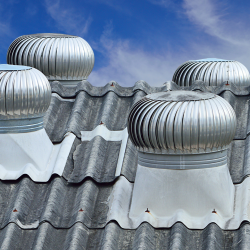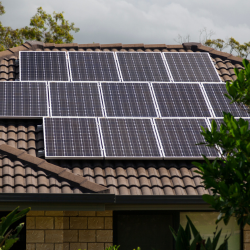
Unlocking the Secrets of Roofing: Exploring the Hidden World Above
Roofs serve as more than mere protective coverings for our homes; they are intricate structures with a wealth of mysteries waiting to be uncovered. As we embark on this journey, let’s delve into the hidden world above and shed light on the fascinating elements that comprise our roofs before thinking about roofing services.
Anatomy of a Roof
The anatomy of a roof is a complex system that encompasses various components, each playing a vital role in ensuring the stability and durability of the structure. At its outermost layer, shingles serve as the first line of defense against the elements, providing protection from rain, wind, and debris. Beneath the shingles lie the underlayment and sheathing, providing additional layers of protection and structural support. Further down, the rafters and trusses form the framework of the roof, distributing the weight of the structure and providing support for the entire roofing system.
The Role of Ventilation

Proper ventilation is crucial for maintaining the health and longevity of a roof. Inadequate ventilation can lead to a host of problems, including moisture buildup, mold and mildew growth, and premature deterioration of roofing materials. By allowing air to circulate freely in the attic space, ventilation helps regulate temperature and humidity levels, preventing condensation and reducing the risk of damage to the roof structure. Additionally, proper ventilation can help improve energy efficiency by reducing the workload on heating and cooling systems.
The Impact of Insulation
Insulation plays a critical role in regulating indoor temperatures and reducing energy costs. By preventing heat loss in the winter and heat gain in the summer, insulation helps maintain a comfortable living environment year-round. Additionally, insulation provides an additional layer of protection against moisture infiltration, reducing the risk of mold and mildew growth in the attic space. Proper insulation is essential for maximizing energy efficiency and ensuring the long-term durability of the roof.
Environmental Considerations
In today’s environmentally conscious world, sustainable roofing materials have become increasingly popular. These materials offer eco-friendly solutions that can help reduce energy consumption, minimize the urban heat island effect, and mitigate the environmental footprint of buildings. From recycled shingles to living green roofs, homeowners have a wide range of options to choose from when it comes to environmentally friendly roofing solutions. By opting for sustainable materials, homeowners can not only reduce their carbon footprint but also contribute to the preservation of the planet for future generations.
Innovations in Roofing Technology

The roofing industry is constantly evolving, driven by advancements in technology and materials. From innovative solar roofing systems to self-healing roofing materials, new technologies are revolutionizing the way we think about roofs. Solar roofing systems, for example, harness the power of the sun to generate clean, renewable energy, reducing reliance on traditional energy sources and lowering utility bills. Self-healing roofing materials, on the other hand, have the ability to repair minor damage automatically, prolonging the lifespan of the roof and reducing the need for costly repairs. These and other innovations are shaping the future of the roofing industry, offering exciting possibilities for homeowners and roofing professionals alike.
Embark on a journey to uncover the mysteries concealed within the world of roofing. From the intricate anatomy of a roof to the latest innovations in technology, there’s a fascinating world waiting to be explored above our heads. Check out what we offer and opt for professional roofing services.
